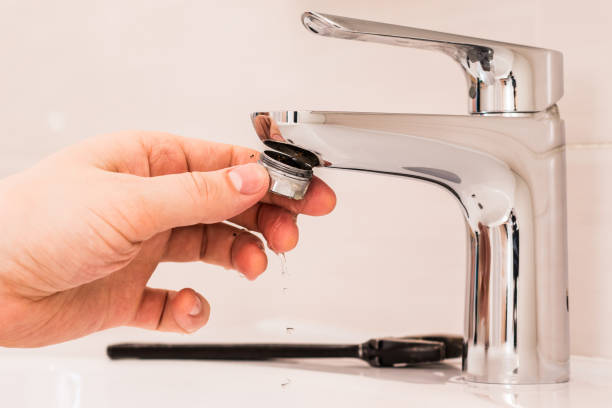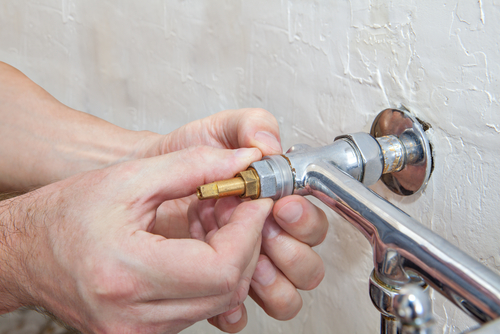Our Reasons Behind Fixing a Broken Faucet
Our Reasons Behind Fixing a Broken Faucet
Blog Article
We've noticed this great article on Leaky Faucets: Why They Happen & What to Do About Them down the page on the net and figured it made sense to write about it with you on my blog.

Dripping faucets might look like a minor hassle, yet their influence surpasses just the annoyance of the audio. From drainage to sustaining unnecessary economic costs and health threats, neglecting a trickling tap can lead to numerous consequences. In this short article, we'll look into why it's vital to address this usual household concern immediately and properly.
Waste of Water
Ecological Impact
Dripping taps add dramatically to water wastefulness. According to the Epa (EPA), a solitary tap trickling at one drip per secondly can lose more than 3,000 gallons of water per year. This not only strains water resources however additionally impacts ecological communities and wild animals depending on them.
Financial Costs
Increased Water Expenses
Past the ecological effect, dripping taps can blow up water bills considerably. The accumulated wastefulness with time translates right into higher energy costs, which might have been avoided with prompt fixings.
Possible Home Damage
Moreover, extended leaking can bring about harm to components and surfaces bordering the tap. Water build-up can trigger staining, rust, and even structural concerns if left neglected, resulting in additional fixing expenses.
Wellness Problems
Mold And Mildew and Mildew Growth
The constant existence of moisture from a trickling tap develops a suitable setting for mold and mildew growth. These fungis not just endanger indoor air high quality but likewise posture wellness threats, particularly for people with respiratory system problems or allergic reactions.
Waterborne Illness
Stationary water in leaking taps can come to be a breeding place for microorganisms and other microorganisms, raising the risk of waterborne conditions. Impurities such as Legionella germs grow in stationary water, potentially bring about serious ailments when consumed or breathed in.
DIY vs. Expert Repair work
Pros and Cons of DIY Repair Service
While some may try to repair a dripping faucet themselves, DIY repair work include their very own collection of difficulties. Without appropriate understanding and devices, DIY efforts can worsen the issue or bring about insufficient repair services, prolonging the problem.
Advantages of Hiring a Specialist Plumber
Hiring a professional plumber guarantees that the underlying reason for the trickling faucet is addressed properly. Plumbings possess the expertise and devices to diagnose and repair faucet issues successfully, conserving time and decreasing the threat of more damage.
Step-by-Step Overview to Repairing a Dripping Tap
Tools Needed
Before attempting to repair a trickling tap, collect the required tools, including a flexible wrench, screwdrivers, replacement components (such as washers or cartridges), and plumber's tape.
Typical Tap Issues and Their Solutions
Identify the type of tap and the certain problem triggering the drip. Usual problems include worn-out washing machines, corroded valve seats, or defective O-rings. Refer to producer instructions or on-line tutorials for step-by-step support on repair work.
Safety nets
Routine Maintenance Tips
To stop dripping faucets, carry out regular upkeep such as cleaning up aerators, checking for leaks, and replacing worn-out components quickly. In addition, take into consideration setting up water-saving tools or updating to much more efficient components.
Value of Prompt Fixes
Attending to dripping faucets as soon as they're observed stops further water wastefulness and potential damages, inevitably conserving both water and money over time.
Effect On Home Worth
Assumption of Well-Maintained Property
Keeping a building in good condition, including attending to upkeep issues like leaking faucets, improves its regarded value and charm among possible buyers or lessees.
Influence on Resale Worth
Qualities with well-maintained plumbing components, including faucets, command higher resale worths in the real estate market. Addressing leaking taps can add to a favorable impact during building examinations and negotiations.
Environmental Responsibility
Individual Contribution to Preservation
Taking duty for dealing with leaking faucets aligns with wider efforts toward water preservation and environmental sustainability. Every individual's activities collectively make a substantial influence on maintaining valuable resources.
Sustainable Living Practices
By focusing on timely repairs and embracing water-saving habits, individuals contribute to sustainable living practices that profit both existing and future generations.
Conclusion
Resolving a dripping tap exceeds mere convenience; it's an essential step toward saving water, reducing economic costs, and securing wellness and residential or commercial property. Whether via do it yourself repairs or specialist help, doing something about it to deal with trickling taps is a small yet impactful method to promote responsible stewardship of sources and contribute to a much healthier, extra sustainable future.
How to Fix a Leaky Faucet: Step-by-Step Repair Guide
A leaky faucet may seem like a simple annoyance, but if it's not fixed promptly, that leak could cost hundreds to potentially thousands. From water damage to mold, mildew, and high water bills, even a tiny leak can be catastrophic if left unattended. Damage like this can even affect the overall value of your home, so it's important to take the right approach for leaky faucet repair. You may need the help of a plumber in some cases, but we've got a few tips you can try on how to fix a leaky faucet before calling the pros.
Four Faucet Types
When you're learning how to fix a leaky faucet, the first step is knowing what kind of faucet you're working with! There are four common types.
Cartridge Faucets
Cartridge faucets come in one- or two-handled varieties. In one-handled cartridge faucets, hot and cold water combines in a single cartridge. In the two-handled versions, hot and cold water are controlled separately and mixed in the faucet.
Ball Faucets
Ball faucets have a single lever you push up and down to adjust the pressure and rotate to change the temperature. A slotted metal ball controls the amount of water allowed into the spout.
Compression Washer Faucets
They're the oldest type of faucet, but they're still used in many homes — especially older ones. Compression faucets have two separate handles that, when turned, raise or lower the washer that seals a water valve. This valve stops water from flowing through the faucet when it is turned off.
Disc Faucets
Disc faucets rarely need to be repaired due to their maintenance-free design. The water flow is controlled by two discs — the upper one raises and lowers against a fixed lower disc, creating a watertight seal. If your disc faucet starts leaking, you may need to replace the seals or clean residue buildup from the inlets.
Fixing a Leaky Faucet
Step 1: Turn Off the Water
Whether you're learning how to fix a leaky bathtub faucet or how to fix a leaky kitchen faucet, always turn off the water supply to your working area when you're fixing a leak. The last thing you want is a flood added to your list of things to fix.
Look for the shutoff valves below your sink or around the tub and turn them clockwise to stop the water flow. If your faucet doesn't have shutoff valves, you may need to turn off the water for the whole house. Check to make sure it's off by turning the faucet on. If nothing comes out, you're ready to start the repair.
Step 2: Take Apart the Faucet
How you disassemble your faucet depends on the type of fixture you have. You can use a flathead screwdriver to remove the caps on top of the handle or handles for cartridge and compression faucets. Inside, you should see handle screws. Unscrew these with a screwdriver to remove the handle.
Disc- and ball-style faucets will typically have an inlet screw near the handle, and removing that will reveal the interior of the faucet.
Detach the Valve Stem
For cartridge- and compression-style faucets, you'll see the inner valve stem or cartridge once you remove the faucet handles. If you have a compression faucet, unscrew the brass valve stem. If you have a cartridge faucet, pull out the cartridge. If your cartridge has been in place for a while, it may require some tools or extra force to remove it due to mineral deposits.
Examine and Replace Parts
Once you've removed the parts, check them out to confirm what needs to be replaced. You may see corroded rubber washers, O-rings, stems, or cartridges. On a ball-style faucet, check the seats and springs for damage.
If you need to repair a leaky disc faucet, check the inlet and seals on the lower disc.
Once you determine what parts must be replaced, visit your local hardware store. Bring the damaged parts with you to ensure you can purchase the correct components to replace them.
Clean Valves and Faucet Cavity
If you've removed a stem or cartridge, you may notice mineral buildup in the faucet's threads. Use white vinegar to clean the valve seat by soaking it for a few minutes, then scrub it away with a soft toothbrush and rinse with warm water. You can also clean the interior of the faucet in the same way.
Reassemble the Faucet
Once your faucet is cleaned and the required parts have been replaced, it's time to reassemble it. Put the pieces back together and slowly turn the water supply back on. Doing this slowly is crucial because too much initial water pressure can damage the new hardware you've just installed.
https://homewarranty.firstam.com/blog/how-to-fix-leaky-faucet

We had been introduced to that write-up on Leaky Faucets: Why They Happen & What to Do About Them through an associate on our other web page. Loved our piece? Please quickly share it. Help others locate it. Thank you so much for taking the time to read it.
Report this page